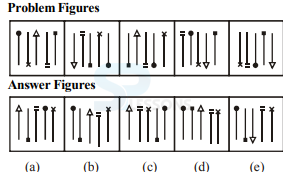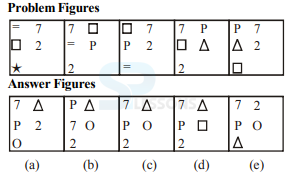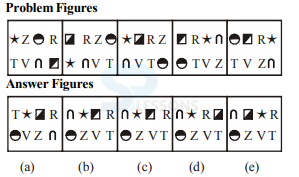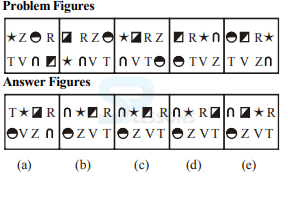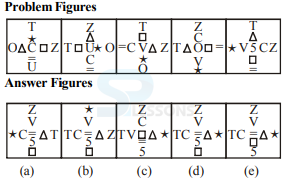 Introduction
Introduction
Career in Banking is one of the most lucrative and most sought after careers. In India, Bank Recruitment Exams are primarily conducted for recruitment of Probationary Officers, Clerks & Specialist Officers. India currently[2019] has 93 commercial and 27 public sector banks out of which 19 are nationalized and 6 are SBI and its associate banks and rest two are IDBI Bank and Bharatiya Mahila Bank, which are categorized as other public sector banks. Recruitment for Bank Probationary Officers, Management Trainees, Clerks and for various other posts generally follow a 3 step recruitment process: Preliminary Exam + Mains Exam + Interview & Group Discussion. The article SBI PO Mains Practice Quiz presents a practice set for the most sought after SBI PO recruitment. Until the year 2013, All Public Sector Banks used to conduct their own entrance test, GDs and Personal Interview for recruiting candidates. However, after 2014, IBPS started conducting recruitment Tests for 12 PSU Banks. IBPS holds a separate entrance test for recruitment.
Mains exams are very important to clear every government sector or bank related recruitment process in India. Only those candidates who are selected in the Mains round are allowed to move further up in the recruitment process. The marks obtained in the Mains exams are considered for the final merit list. Mains exams usually consist of 4 sections, with 155 questions with a time duration of 3 hours. Mains exams most certainly have negative marking.
 Quiz
Quiz
Directions Q (1 - 5): In each of the questions below are given four statements followed by four conclusions numbered I, II, III and IV. You have to take the given statements to be true even if they seem to be at variance with commonly known facts. Read all the conclusions and then decide which of the given conclusions logically follows from the given statements disregarding commonly known facts.
1. Statements:
All snakes are eagles.
Some eagles are rabbits.
All rabbits are birds.
Some birds are animals.
Conclusions: I. Some animals are snakes.
II. Some birds are snakes.
III. Some birds are eagles.
IV. All birds are rabbits.
Q21:
Answer: Option D
Q22:
Answer: Option A
Q23:
Answer: Option B
Q24:
Answer: Option C
Q25:
Answer: Option E
Q26:
Answer: Option C
Q27:
Answer: Option D
Solution: For Q(28-30)
pit na sa ⟹ you are welcome… (i) na ho pa la ⟹ they are very good… (ii) ka da la ⟹ who is good… (iii) od ho pit la⟹ they welcome good people… (iv) Code for
(a) ‘good’ is la [ from (ii) and (iv)].
(b) ‘they’ is ho [ from (ii), (iv) and (a)].
(c) ‘welcome’ is pit [ from (i) and (iv)].
(d) ‘people’ is od [ by elimination in (iv)]
(e) ‘are’ is na [ from (i) and (ii)].
(f). ‘very’ is pa [ by elimination in (ii)].
Q28:
Answer: Option D
Q29:
Answer: Option C
Q30:
Answer: Option E
Explanation:
Only iii is redundant
Q31:
Answer: Option B
Explanation:
In alternate steps the left element shift to right → middle. The second and fourth from left interchange places while all of them get inverted.
Q32:
Answer: Option C
Explanation:
In alternate steps the upper left, the upper middle and left middle shift one step ACW in a cyclic order. The centre shifts to lower middle and a new element appears at centre.
Q33:
Answer: Option A
Explanation:
In the first step three outer corner elements shift one step in a cyclic order while the three corresponding inner elements also shift in the same way. The remaining one inner and outer elements interchange places. In the next step the upper four and lower four elements shift one step in a cyclic order.
Q34:
Answer: Option C
Q35:
Answer: Option A
Explanation:
In alternate steps the upper middle, the left middle and the right middle shift one step ACW in cyclic order while the lower three elements of the middle column shift one step downward in cyclic order.
Q36:
Answer: Option B
Q37:
Answer: Option D
Q38:
Answer: Option C
Q39:
Answer: Option E
Q40:
Answer: Option D
Q41:
Answer: Option D
Q42:
Answer: Option B
Q43:
Answer: Option D
Q44:
Answer: Option D
Q45:
Answer: Option D
-
A. None follows
B. Only II follows
C. Only III follows
D. Both II and III follow
E. None of these
-
A. None follows
B. Only II follows
C. Only III follows
D. Both II and III follow
E. None of these
-
A. None follows
B. Only II follows
C. Only III follows
D. Only either I or II follows
E. None of these
-
A. None follows
B. Only II follows
C. Only III follows
D. Only either I or IV follows
E. None of these
-
A. None follows
B. Only II follows
C. Only III follows
D. Only either III or IV follows
E. None of these
-
A. Only I and II are true
B. Only II and III are true
C. Only I and III are true
D. All I, II and III are true
E. None of these
-
A. None is true
B. Only I is true
C. Only II is true
D. Only III is true
E. Only II and III are true
-
A. None is true
B. Only I is true
C. Only II is true
D. Only III is true
E. Only II and III are true
-
A. Only either I or II is true
B. Only III is true
C. Only I and II are true
D. All I, II and III are true
E. Only either I or II and III are true
-
A. None is true
B. Only I is true
C. Only II is true
D. Only III is true
E. Only I and II are true
-
A. III and IV only
B. III, IV and V only
C. I, III and IV only
D. V only
E. None of these
-
A. Only III, IV and V
B. Only II, III and IV
C. Only IV and V
D. Only I and II
E. None of these
-
A. I and II only
B. II, III and IV only
C. I and III only
D. II, III and V only
E. None of these
-
A. I, III and IV only
B. II, III and V only
C. III and IV only
D. I, III and V only
E. None of these
-
A. Physical fitness programmes are often the most popular services offered to employees.
B. Studies have shown that training in stress management is not effective for many people.
C. Regular exercise reduces people’s risk of heart disease and provides them with increased energy.
D. Physical injuries sometimes result from entering a strenuous physical fitness programme too quickly.
E. None of these
-
A. car the in as he may me
B. car may the as in he me
C. car as may he the in me
D. car may the in as he me
E. None of these
-
A. clever remand window batch sales tiger never
B. window remand clever sales batch tiger never
C. batch never sales tiger clever remand window
D. clever remand window tiger batch sales never
E. It cannot have sixth step.
-
A. like nuke true veto be se my
B. be my like se true veto nuke
C. be my se like true veto nuke
D. veto true nuke like so be my
E. Cannot be determined
-
A. III
B. IV
C. V
D. VI
E. VII
-
A. at so more pure cat not soft sir
B. more pure soft so sir cat at not
C. more pure soft cat so sir at not
D. more so sir soft pure cat at not
E. Cannot be determined
-
A. Telugu
B. Hindi
C. Bangla
D. Kannada
E. None of these
-
A. H
B. L
C. M
D. L or M
E. None of these
-
A. Marathi-I-Hyderabad
B. Tamil-M-Kolkata
C. Marathi-I-Chennai
D. Punjabi-K-Delhi
E. None of these
-
A. H
B. M
C. L
D. K
E. None of these
-
A. Bangla
B. Marathi
C. Telugu
D. Cannot be determined
E. None of these
-
A. MegaCorp’s competitors will succeed in attracting customers only if those competitors adopt MegaCorp’s goal as their own.
B. A company that does not correctly anticipate the expectations of its customers is certain to fail in advancing the quality of its products.
C. MegaCorp’s goal is possible to meet only if continuing advances in product quality are possible.
D. If a company becomes satisfied with the quality of its products, then the quality of its products is sure to decline.
E. None of these
-
A. Several of the fundamental principles of physics are involved in producing and analyzing visual images.
B. Knowledge of physics is becoming increasingly important in understanding the technology used in today’s world.
C. Evidence that a large producer of photographic equipment has donated to the high school could be used in the proposed curriculum.
D. In today’s world the production and analysis of visual images is of major importance in communications, business, and recreation.
E. None of these
-
A. ho
B. pit
C. la
D. od
E. Data inadequate
-
A. na
B. da
C. pa
D. Data inadequate
E. None of these
-
A. None
B. (i) and (iii)
C. (ii) or (iv)
D. (i) or (iv)
E. None of these
-
A. user.dat, win, ini
B. user.dat, system.dat
C. win.reg, user.dat
D. autoexec.bat, config.sys
E. win.reg, system.dat
-
A. Protocol
B. SSL
C. Proprietary
D. Internet
E. SET
-
A. data
B. job
C. process
D. information
E. None of these
-
A. Logic gates
B. Floppy disks
C. Magnetic disks
D. Magnetic tape
E. Integrated circuits
-
A. classifying
B. summarizing
C. reproducing
D. sorting
E. sequencing
-
A. joystick
B. mouse
C. trackball
D. printer
E. scanner
-
A. bandwidth
B. bits per second
C. bits per minute
D. All the above
E. None of these
-
A. mnemonics
B. gray code
C. machine code
D. universal product code
E. access-3 code
-
A. Ctrl + Page up
B. Ctrl + Page down
C. Ctrl + Enter
D. Ctrl + Space bar
E. Ctrl + C
-
A. Group
B. Alias
C. Mail server
D. List server
E. Remote server
| Member | City | Mother tongue |
|---|---|---|
| H | Chennai | Marathi |
| i | Hyderabad | Telugu |
| j | Banglore | Kannada |
| K | Ahmadabad | Punjab |
| L | Delhi | Bangla |
| M | Kolkata | Tamil |
| N | Mumbai | Hindi |
Directions Q (46 - 50): Study the following table carefully to answer the questions that follow:
Number of Clerks and Officers recruited (In thousands) by five different banks during six different years
46. What is the average amount of interest per year which the company had to pay during this period?
51. Total number of lecturers (both male and female) in Hindi is approximately what per cent of the total number of female lecturers in Mathematics and Chemistry together?
| Year | Item of Expenditure | ||||
|---|---|---|---|---|---|
| Salary | Fuel and Transport | Bonus | Interest on loans | Taxes | |
| 1998 | 288 | 98 | 3.00 | 23.4 | 83 |
| 1999 | 342 | 112 | 2.52 | 32.5 | 108 |
| 2000 | 324 | 101 | 3.84 | 41.6 | 74 |
| 2001 | 336 | 133 | 3.68 | 36.4 | 88 |
| 2002 | 420 | 142 | 3.96 | 49.4 | 98 |
- A. 32.43 lakhs
B. Rs. 33.72 lakhs
C. Rs. 34.18 lakhs
D. Rs. 36.66 lakhs
- A. 0.1%
B. 0.5%
C. 1%
D. 1.25%
- A. 62%
B. 66%
C. 69%
D. 71%
- A. 544.44 lakhs
B. Rs. 501.11 lakhs
C. Rs. 446.46 lakhs
D. Rs. 478.87 lakhs
- A. 4:7
B. 10:13
C. 15:18
D. 5:8
| Lecturers | Males | Females |
|---|---|---|
| Mathematics | 3 | 4 |
| Education | 5 | 3 |
| Hindi | 1 | 3 |
| Chemistry | 1 | 7 |
| Physics | 9 | 5 |
| Zoology | 7 | 9 |
- A. 58
B. 43
C. 47
D. 51
E. 40
- A. 192
B. 182
C. 146
D. 136
E. None of these
- A. 156
B. 160
C. 150
D. 153
E. None of these
- A. 696
B. 702
C. 712
D. 668
E. None of these
- A. 5:9
B. 2:9
C. 3:7
D. 5:3
E. None of these
- A. 72
B. 75
C. 80
D. 95
E. 86
- A. 92
B. 9
C. 102
D. 108
E. None of these
- A. 200
B. 210
C. 190
D. 220
E. None of these
- A. 3:11
B. 3:10
C. 6:11
D. 11:6
E. None of these
- A. 130
B. 120
C. 145
D. 155
E. None of these
- A. 100
B. 105
C. 108
D. 106
E. None of these
- A. 137
B. 208
C. 145
D. 218
E. None of these
- A. 7:1
B. 13 : 4
C. 9:5
D. 16:13
E. None of these
- A. 165
B. 52
C. 158
D. 75
E. None of these
- A. 54
B. 68
C. 64
D. 52
E. 58
- A. 9 : 2
B. 7 : 5
C. 5 : 7
D. 3 : 7
E. None of these
- A. 5
B. 8
C. 3
D. 10
E. 12
- A. 1755
B. 1525
C. 1675
D. 1500
E. None of these
- A. 150
B. 225
C. 375
D. 300
E. None of these
- A. 715
B. 745
C. 700
D. 675
E. None of these
- A. petroleum products, ores and minerals, engineering goods
B. ores and minerals, gems and jewelry, chemicals and related products
C. gems and jewellery, chemicals and related products, agriculture and allied products
D. ores and minerals, chemicals and related products, agriculture and allied products
E. ores and minerals, engineering goods, chemicals and related products
- A. petroleum products
B. project goods
C. ores and minerals
D. sports goods
E. None of these
- A. Bulk imports
B. Pearls, precious and semi-precious stones
C. Machinery
D. Project goods
E. Others
- A. 39.77
B. 41.85
C. 91.24
D. 95.98
E. None of these
- A. 1.36
B. 1.38
C. 1.46
D. 1.48
E. None of these
- A. 20 Years
B. 16 Years
C. 12 years
D. 18 years
E. 21 years
- A. 280
B. 180
C. 200
D. 150
E. 210
- A. 16 meters
B. 8 meters
C. 12 meters
D. 32 meters
E. 20 meters
- A. 104°
B. 126°
C. 56°
D. 132°
E. 106°
- A. 5 : 3
B. 2 : 3
C. 2 : 1
D. 4 : 3
E. 3 :2
Directions Q (81 - 85): Read each sentence carefully and detect the error which may be in an one of the parts a, b , c or d. In case of ‘No error’, (e) will be the answer.
81.
- A. To hit a man
B. when he is down
C. is a contemptuous
D. thing to do
E. No error.
- A. The climate on this
B. altitude is cool and dry
C. but down in the valley
D. it is very sultry
E. No error
- A. Since her mother
B. died when she
C. was young
D. she did lack maternal are
E. No error.
- A. In 1665 a
B. great pestilence caused
C. the death of 63000 persons
D. in the city of London
E. No error.
- A. Because of his
B. lack of interest in the
C. affairs of the society, the members
D. decided to depose the president
E. No error.
- A. A
B. B
C. C
D. D
E. E
- A. A
B. B
C. C
D. D
E. E
- A. E
B. F
C. D
D. C
E. A
- A. B
B. C
C. D
D. E
E. F
- A. F
B. E
C. D
D. B
E. A
- A. The descent in the value of stocks
B. The trend of substantial increase in value of stocks
C. Safety provided by banks to their deposits
D. Optimism of the stock market players
E. The interest rates are going up
- A. The indices in the former case are increasing while those in the latter are decreasing
B. There is no rerqarkable trend visible between the two sets of indices
C. Indices in both the groups of exercises are stable over a period of last five years
D. The markets in both the groupd of countries have shown upward trend
E. None of these
- A. (A) only (B) only
B.(C) and (B) only
C. (C) only
D. (A) & (C) only
E. None of these
- A. It led to a brief recession
B. It increased long term need for housing
C. It helped increase the interest rates on housing
D. It prolonged the low interest rate regime
E. None of these
- A. All the three-(A), (B) and (C)
B. (A) and (B) only
C. Either (B) or (C) only
D. (A) and (C) only
E. Either (A) or (C) only
- A. vigorously
B. efficiently
C. hurriedly
D. insignificantly
E. slowly
- A. aggravated
B. elevated
C. deflated
D. damaged
E. stopped
- A. drawing
B. haphazard
C. upbeat
D. extravagant
E. sailing
- A. shortened
B. widened
C. thronged
D. stimulated
E. escalated
- A. certain, the
B. known, of
C. aware, of
D. favorable, those
E. uncertain. all
- A. anxiety, exist
B. grief, enjoy
C. impatience, preach
D. anger, define
E. jealousy, bad
- A. quiet, power
B. cheerful, grief
C. balanced, temper
D. thoughtful, anxiety
E. generous, wealth
- A. realistic, zeal
B. lower, conviction
C. loud, argument
D. soft, appeal
E. pitch, statement
- A. long, enthusiastic
B. deep, cautious
C. dark, frightened
D. crowded, isolated
E. sharp, worried
- A.. scared
B. careful
C. reckless
D. aware
E. worried
- A. challenge
B. measure
C. principle
D. chance
E. risk
- A. established
B. maligned
C. damaged
D. rebuilt
E. involved
- A. sublimate
B. express
C. minimize
D. regulate
E. control
- A. baseless
B. imaginary
C. exaggerative
D. real
E. national
- A. cure
B. diagnosis
C. prescription
D. prevention
E. medicine
- A. harmony
B. discomfiture
C. disagreement
D. consensus
E. statement
- A. expressed
B. ignored
C. induced
D. seen
E. perverted
- A. doesn’t
B. won’t
C. don’t
D. not
E. hasn’t
- A. credible
B. serious
C. fraudulent
D. urgent
E. skilled
- A. Health officials have been warning the government against the transmission of contagious diseases from the slum areas to other parts of the city.
B. Slum dwellers not only play a significant role in urban economy but also provide cheap labor for everyday work of the cities.
C. A recent report suggested that 34 per cent of government land is illegally occupied by the slum dwellers.
D. The slum dwellers live in sub-human, unhygienic conditions in their tiny shanties and are very often hubs for criminal activities.
E. None of these
116. The Reserve Bank of India takes which of the following measures when it intends to ease the liquidity crunch in the country.?
A) It prints and supplies additional currency notes in the market.
(B) It takes steps to increase the flow of foreign direct investment.
(C) It reduces Statutory Liquidity Ratio (SLR) and Cash Reserve Ratio (CRR).
- A. Only (A)
B. Only (B)
C. Only (C)
D. Only (A) and (B)
E.. All (A), (B) and (C)
- A. Society for Worldwide Interbank Financial Telecommunication
B. Secure Worldwide Interbank Financial Telecommunication.
C. Society for Worldwide Intra-bank Financial Transaction.
D. Security for Worldwide Interbank Financial Transaction
E. None of these
- A. Only (A)
B. Only (B)
C. Only (C)
D. Only (A) and (B)
E. All (A), (B) and (C)
- A. Only (A)
B. Only C
C. Only (C)
D. Only (A) and (C)
E. All (A), (B) and (C)
- A. Dr. Urjit Patel
B. H R Khan
C. Dr Anand Sinha
D. K C Chakrabarty
E. None of these
- A. Shilpa Phadnis
B. Usha Anantha Subramanian
C. Reeba Zachariah
D. Sudha Misra
E. None of these
- A. Amitav Ghosh
B. Tavleen Singh
C. Amit Chaudhuri
D. Arundhati Roy
E. None of these
- A. Bank Rate
B. Repo rate
C. Prime Lending Rate
D. Cash Reserve Ratio
E. None of these
- A. Only (A)
B. Only (B)
C. Only (C)
D. Only (A) and (B)
E. Only (C) and (D)
- A. State Bank of India
B. Reserve Bank of India
C. Government Treasury
D. International Monetary Fund
E. Indian Bank Association
- A. It was constituted by a Parliament of India act called Insurance Regulatory and Development Authority Act, 1999
B. The agency operates from its headquarters at Hyderabad in Andhra Pradesh where it shifted from Delhi in 2001.
C. It works to bring about speedy and orderly growth of the insurance industry, protect the interest of policyholders and put in place effective grievance redressal machinery.
D. Only (a) and (b)
E. All (a), (b) and (c)
- A. Industrial Research and Development Authority of India
B. Insurance Research and Development Authority of India
C. Insurance Regulation Development Authority of India
D. Industrial Research and Demands Agency
E. None of these
- A. Essential Credit and Borrowing
B. Essential Commercial Borrowing
C. External Credit and Business
D. External Commercial Borrowing
E. None of these
- A. Japan
B. Norway
C. Newzealand
D. Finland
E None of these
- A. Banking Companies Act
B. Fiscal Responsibility and Budget Management Act
C. Finance Act
D. Both (a) and (b)
E. None of these
- A. Part XV
B. Part XVII
C. Part XXI
D. Part XXII
E. None of these
- A. its own shares
B. partly paid shares
C. personal guarantee of directors and managers
D. guarantee of other banks
E. None of these
- A. Nationalized bank
B. NABARD
C. Central Government
D. Central Government, State Government and the Sponsoring Commercial Bank in the ratio of 50 : 15 : 35 respectively
E Reserve Bank of India
- A. Reserve Bank of India
B. a board of directors
C. the sponsor bank
D. the State Government
E. None of these
- A. Life Insurance Corporation of India
B. General Insurance corporation
C. Deposit Insurance and Credit Guarantee Corporation
D. All of the above
E None of these
- A. permission of NABARD
B. permission of Director, Institutional Finance
C. approval of SIDBI
D. RBI license
E. approval of DRDA
- A. scheduled commercial banks
B. subsidiaries of the sponsor banks
C. subsidiaries of NABARD
D. All of the above
E. None of these
- A. can issue guarantees against 100% cash margin or 50% cash margin plus collateral
B. have been freed from Service Area Approach. They can operate in the entire area of their Jurisdiction. Commercial banks will take over the villages allotted to RRBs under SAA
C. are permitted to open Extension Counters at the premises of the borrowers, if they are the principal banker to the borrower
D. All of the above
E None of these
- A. Sponsor bank
B. Central Government
C. State Government
D. RBI and NABARD
E. IDBI
- A. The State co-operative banks at the State level, the Central co-operative banks at the district level and primary co-operative banks at the district level and primary co-operative credit societies at the village level
B. the State co-operative banks in the State, NABARD and RBI
C. primary credit co-operative societies at the grass root level, district co-operative bank at district level and NABARD at All-India level
D. All of the above
E. None of these
- A. occupy a crucial importance in the co-operative credit structure
B. form an important link between the State co-operative bank at the apex and the primary agricultural credit societies at the base
C. are closer to the primary societies than an apex bank could be
D. All of the above
E. None of these
- A. mobilise the resources in the district for financing its members to the maximum extent possible
B. to channelize the flow of funds from the State co- operative banks
C. Both of the above
D. All of the above
E. None of these
- A. Reserve Bank of India
B. a board of directors
C. the sponsor bank
D. the State Government
E. Central Government
- A. Central land mortgage banks at State level and primary land mortgage banks at the district level
B. State land mortgage banks at the State level and NABARD at All-India level
C. Regional Rural Banks at the district level and NABARD at the central level
D. All of the above
E. None of these
- A. Mahatma Gandhi inaugurated the first Indian co-operative bank
B. when the first Co-operative Societies Act was passed
C. when the first co-operative bank was established in Bombay
D. All of the above
E. None of these
- A. Jawahar Lal Nehru
B. Vallabh Bhai Patel
C. R. K. Shanmukham Chetty
D. Morarji Ranchhodji Desailn
E. None of these
- A. The study of money and other assets
B. The management and control of those assets
C. The science of managing money
D. All of the above
E. None of these
- A. Fixed Capital
B. Working Capital
C. Capital Budget
D. Cash Budget
E. None of these
- A. Anandoya Express
B. Antyodaya Express
C. Anand Express
D. All of the above
E. None of these
- A. Southern Railway
B. Northern Railway
C. Konkan Railway
D. North Central Railway
E. None of these
- A. Introduction of Humsafar trains for senior citizens
B. Coolies will be called Sahayaks
C. All new Railway stations to be built as per Accessible India guidelines
D. The cleaning of toilets will be requested through SMS
E. None of these
- A. 10,000 crore rupees
B. 9,000 crore rupees
C. 11,000 crore rupees
D. 6,000 crore rupees
E. None of these
- A. 40,000 crore rupees
B. 50,500 crore rupees
C. 38,500 crore rupees
D. 39,500 crore rupees
E. None of these
- A. Kerala
B. Gujarat
C. Arunachal Pradesh
D. Tamil Nadu
E. None of these
- A. 160 kmph
B. 170 kmph
C. 180 kmph
D. 190 kmph
E. None of these






